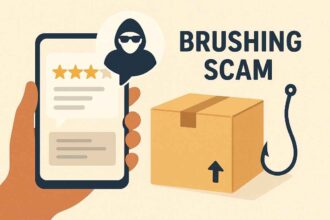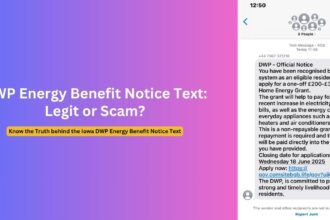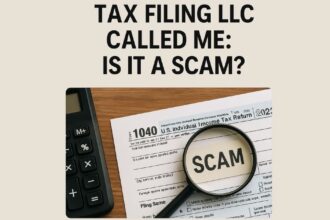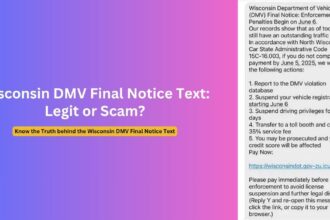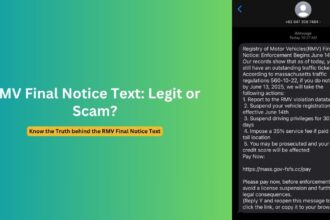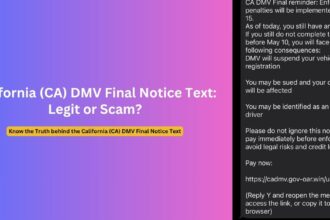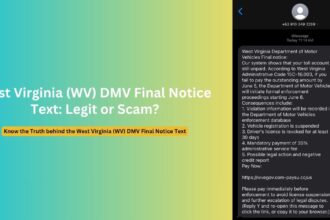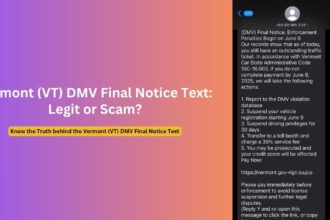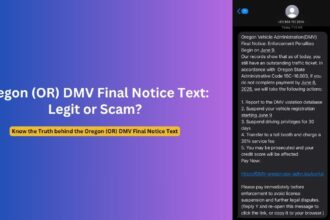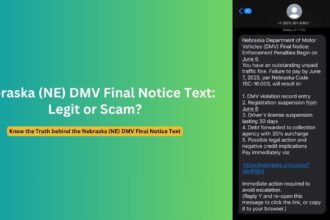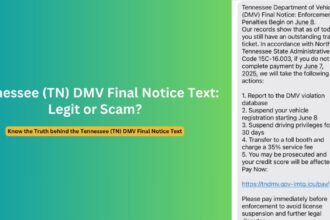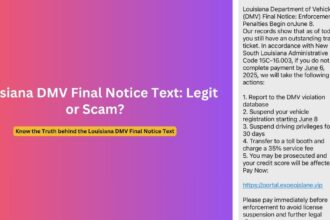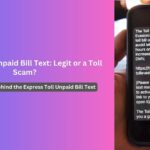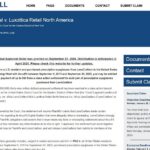In recent months, Minnesota residents have been bombarded with fraudulent text messages claiming to be from the Minnesota Department of Transportation (MnDOT) demanding payment for unpaid tolls. These sophisticated scams have spread across multiple states, targeting both toll road users and people who have never used toll roads at all. As reports continue to pile up, MnDOT and other transportation departments are taking action to warn the public and prevent more people from falling victim to these increasingly convincing schemes.
The Overview of the MnDOT Toll Scam
The scam operates through text messages or emails claiming to be from MnDOT or Minnesota E-ZPass, informing recipients they have an unpaid toll balance that requires immediate attention. The messages typically include a payment link and use threatening language about penalties, legal action, or additional fees if payment isn’t made by a specific deadline—usually within a very short timeframe to create a sense of urgency.
What makes these scams particularly deceptive is that Minnesota does have legitimate E-ZPass lanes on some highways, such as I-35W and I-394, which can cause confusion among residents. However, Minnesota doesn’t have traditional toll roads like some other states, and MnDOT has explicitly stated they never request payment or personal information through text messages or emails.
“The scammers are getting more sophisticated, using official-looking messages and creating a sense of urgency to pressure people into clicking their malicious links,” said a MnDOT spokesperson. “They’re targeting everyone randomly—not just E-ZPass users—hoping to catch people off guard.”
How Scammers Trap Victims Through Fake MnDOT Final Reminder Texts
The fraudsters employ several psychological tactics to make their scams effective:
- Creating urgency: Messages typically mention an imminent deadline (“If you fail to pay by March 23, 2025, you will be penalized or subject to legal action”)
- Impersonating authority: Using official-sounding language and claims of being from government agencies like MnDOT
- Providing seemingly legitimate payment options: Links that lead to professional-looking but fraudulent payment pages designed to steal financial information
- Using unusual instructions: Some texts include specific directions like “Please reply Y, then exit the SMS and open it again to activate the link”—a tactic designed to bypass spam filters or tracking
One Minnesota resident reported receiving a text claiming to be from MnDOT with the message:
MNDOT Final Reminder: You have an outstanding toll. Your toll account balance is outstanding. If you fail to pay by March 23, 2025, you will be penalized or subject to legal action.
fake MnDOT scam text example
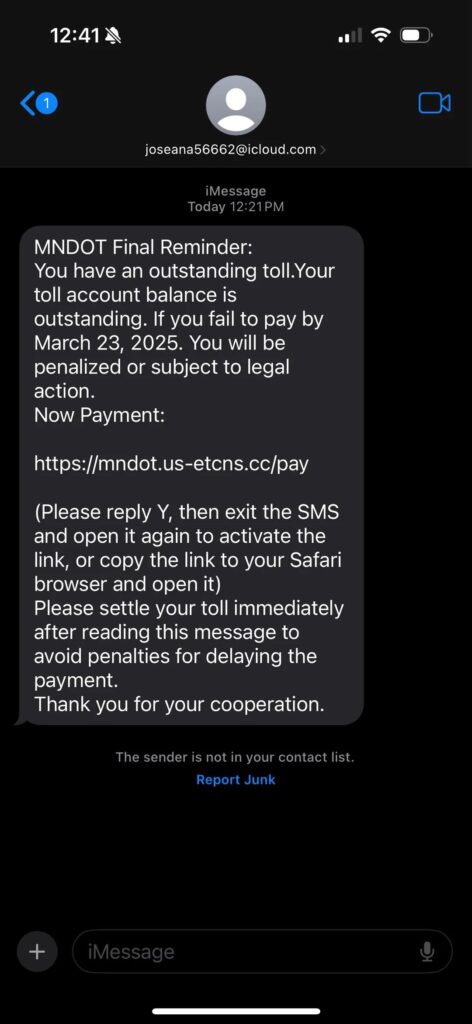
The message included a suspicious payment link (mndot.us-etcns.cc/pay) and instructions to reply to activate the link. This particular message came from a personal iCloud email address—a clear red flag that the communication wasn’t from an official government agency.
Red Flags: How to Identify MnDOT Toll Scam Messages
Being able to identify these scam messages is your first line of defense. Here are the key warning signs to watch for:
Sender Information
- Messages from personal email addresses (like gmail.com, icloud.com, or yahoo.com)
- Text messages from unknown or international phone numbers
- Email addresses that don’t end in .gov or state.mn.us
URL and Website Issues
- Payment links that don’t contain official government domains (.gov, state.mn.us)
- Links with unusual extensions (.cc, .xin) or suspicious combinations (like us-etcns.cc)
- Websites that look official but have minor spelling or design differences from legitimate government sites
Content and Language Concerns
- Grammatical errors or awkward phrasing
- Urgent demands for immediate payment
- Threats of legal action, arrest, or significant penalties
- Unusual instructions for accessing payment links
- Requests to provide credit card information via text, email, or phone
Contextual Red Flags
- Receiving toll notices when you haven’t traveled on toll roads
- Toll notices from states you’ve never visited
- Messages about Minnesota toll roads (when Minnesota doesn’t have traditional toll roads)
What To Do If You Receive a Fake MnDOT Toll Message
If you receive a suspicious text message or email claiming to be from MnDOT or E-ZPass Minnesota about an unpaid toll, take these steps:
- Do not reply to the message — Responding confirms your number or email is active, potentially inviting more scam attempts
- Do not click on any links — These links typically lead to fraudulent websites designed to steal your personal or financial information
- Delete the message — After determining it’s fraudulent, remove it from your device
- Block the sender — Most smartphones allow you to block specific numbers or email addresses to prevent future contact
- Report the message as spam/junk — Use your device’s built-in reporting tools to flag the message as junk
- Verify legitimately — If you’re concerned about a potential unpaid toll, contact E-ZPass Minnesota directly through official channels:
- Call the official customer service number: 1-866-397-4334
- Visit the official website: ezpassmn.com
- Check your account through the secure customer portal
MnDOT has emphasized that they will never send text messages or emails requesting payment or personal information. Official communications about account issues come through mail with agency letterhead and multiple contact methods.
Staying Safe From MnDOT and Other Toll-Related Scams
Protecting yourself from these and similar scams requires ongoing vigilance:
- Know how government agencies communicate: Official agencies like MnDOT primarily use postal mail for important notices, not text messages or emails
- Verify before paying: Always confirm any supposed debt through official channels before making payments
- Use official websites: Access government services only through .gov or official state websites (state.mn.us for Minnesota)
- Be skeptical of urgency: Government agencies typically provide reasonable timeframes for responses, not immediate deadlines
- Check your accounts regularly: If you have a legitimate E-ZPass account, monitor it through the official portal to stay informed of your actual status
- Keep your devices secure: Ensure your phone and computer have updated security software to help identify malicious links
What To Do If You’ve Already Fallen For The Scam
If you’ve clicked on a link or provided personal or financial information to what you now suspect was a scam, take immediate action:
- Contact your financial institutions: If you provided credit card or banking information, contact your bank or credit card company immediately to report potential fraud
- Change your passwords: Update passwords for any accounts that may have been compromised, especially if you used the same credentials on the scam site
- Monitor your accounts: Check your financial statements carefully for unauthorized charges
- Place fraud alerts: Consider placing fraud alerts with the major credit bureaus (Experian, Equifax, and TransUnion)
- Report the scam: File reports with:
- The Federal Trade Commission (FTC) at ReportFraud.ftc.gov
- The FBI’s Internet Crime Complaint Center (IC3) at ic3.gov
- Your local police department
- Document everything: Keep copies of all communications, screenshots, and records of any financial losses for potential investigations
Official Statements and Ongoing Efforts
MnDOT has been proactive in warning residents about these scams. In an official statement, they emphasized: “We will never text or email you asking for personal or sensitive information. For your security, we do not accept credit card numbers by mail, email, chat, or voicemail.”
This issue isn’t limited to Minnesota. Transportation departments in Oregon, Washington, Delaware, Texas, Ohio, Maryland, and other states have issued similar warnings about toll-related scams in their jurisdictions. Some states like Oregon and Missouri have specifically noted they don’t even have toll road systems, yet residents still receive these fraudulent messages.
Law enforcement agencies are working to track down the perpetrators, but the nature of these scams—often originating from international sources using spoofed numbers and temporary websites—makes prosecution challenging.
The Broader Threat Landscape
These toll scams are part of a larger trend of government impersonation scams that have increased dramatically in recent years. According to the FTC, Americans lost more than $445 million to government impersonation scams in the last year alone.
As scammers become more sophisticated in their approaches, public awareness remains one of the most effective defenses. By staying informed about current scam techniques and maintaining healthy skepticism about unexpected payment demands, Minnesotans can protect themselves from falling victim to these increasingly convincing frauds.
Remember: When in doubt, reach out directly to official government agencies through their published contact information rather than responding to unsolicited messages. And if something seems suspicious—like a toll notice for a state without toll roads—it probably is.


